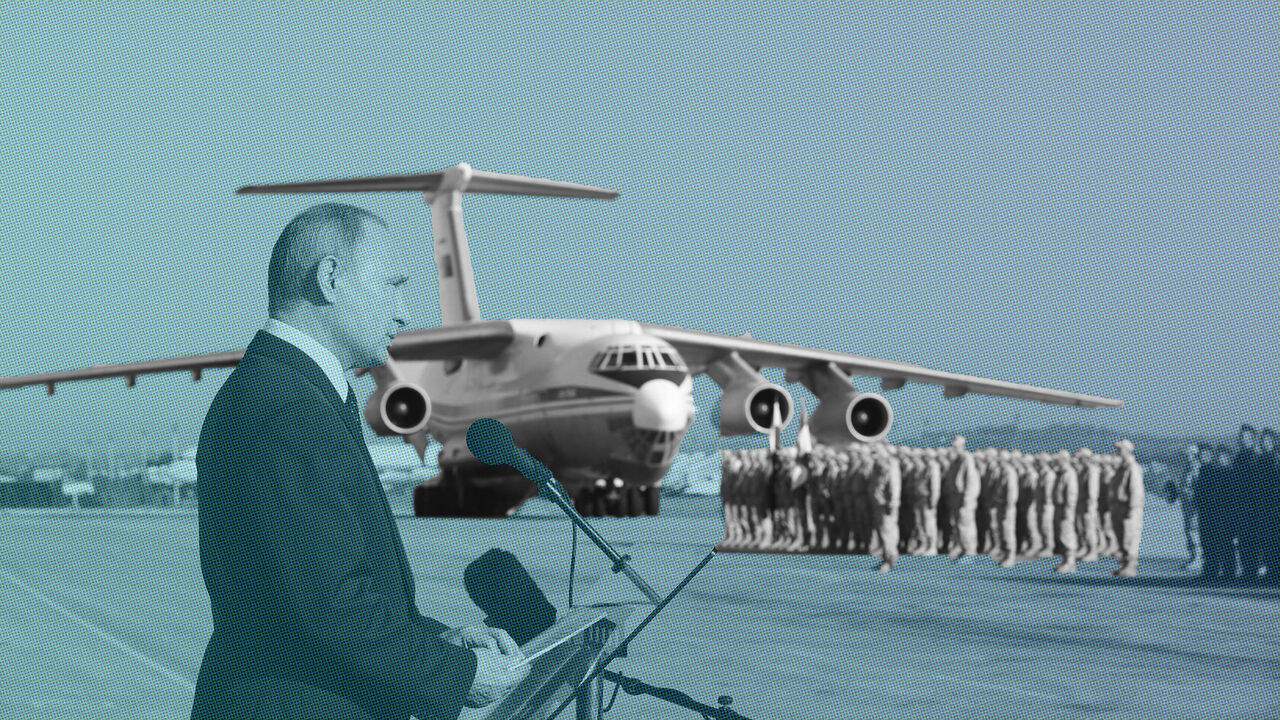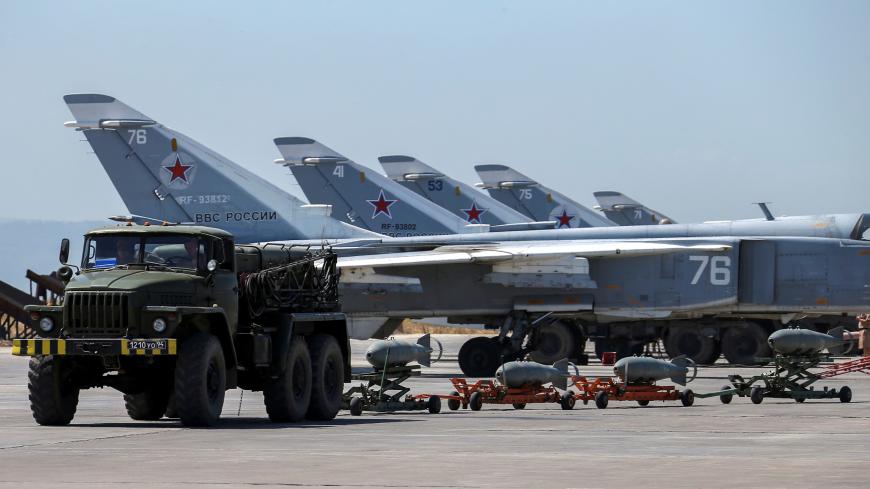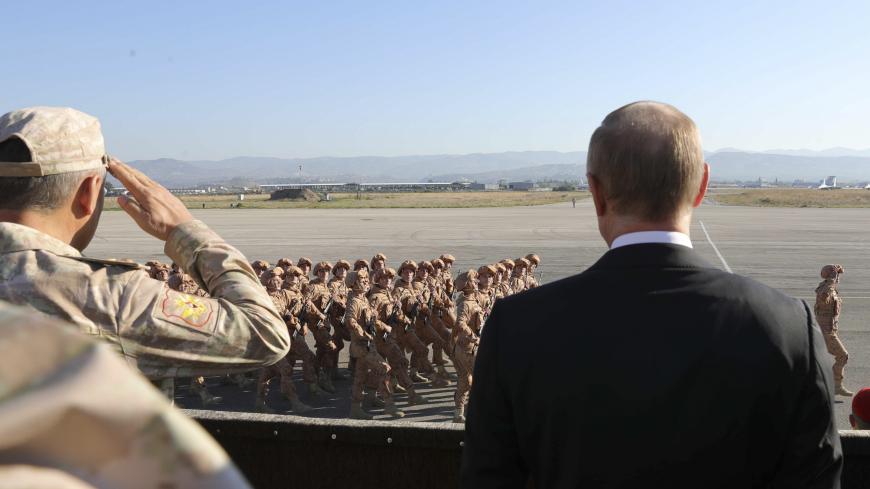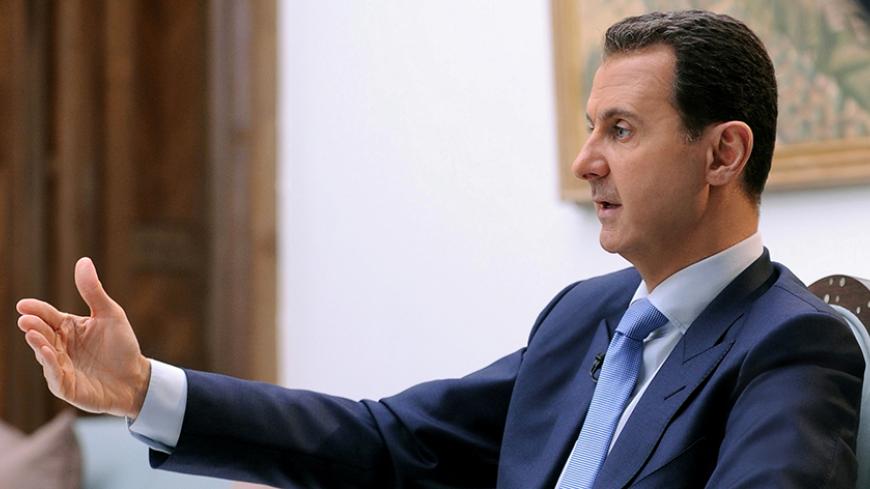
Russian media tries to sort out source of attack on Syria air base
Subscribe for less than $9/month to access this story and all Al-Monitor reporting.
OR
Create an account for a 7-day trial to access this article and all of AL-Monitor.
By entering your email, you agree to receive ALM's daily newsletter and occasional marketing messages.












![A picture taken on February 3, 2018, shows smoke billowing from the site of a downed Sukhoi-25 fighter jet in Syria's northwest province of Idlib.
Rebel fighters shot down a Russian plane over Syria's northwest Idlib province and captured its pilot, the Syrian Observatory for Human Rights said.
/ AFP PHOTO / OMAR HAJ KADOUR / The erroneous mention[s] appearing in the metadata of this photo by OMAR HAJ KADOUR has been modified in AFP systems in the following manner: [in Syria's northwest province of Idlib.](/sites/default/files/styles/article_header/public/almpics/2018/02/GettyImages-913730440.jpg/GettyImages-913730440.jpg?h=a5ae579a&itok=ehUK8ZcX)


